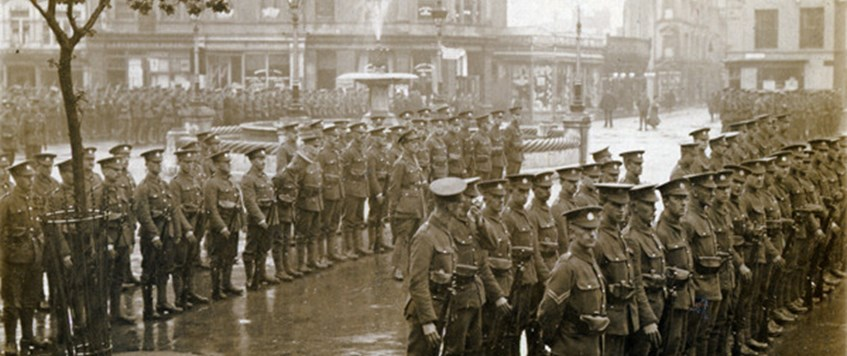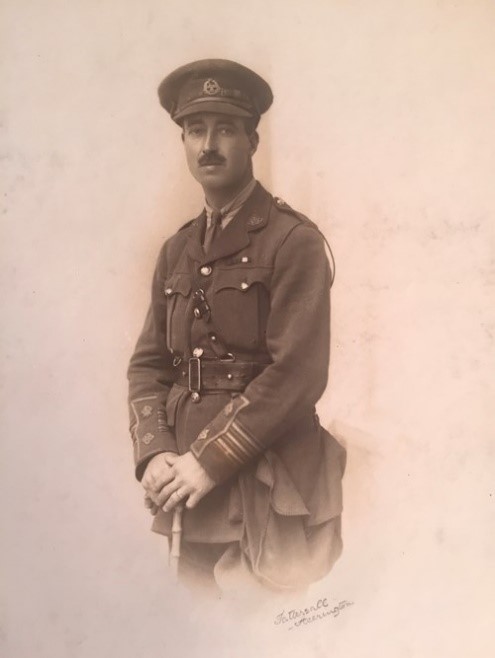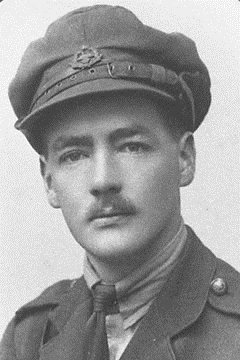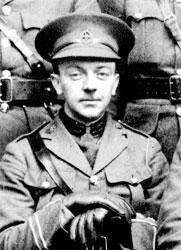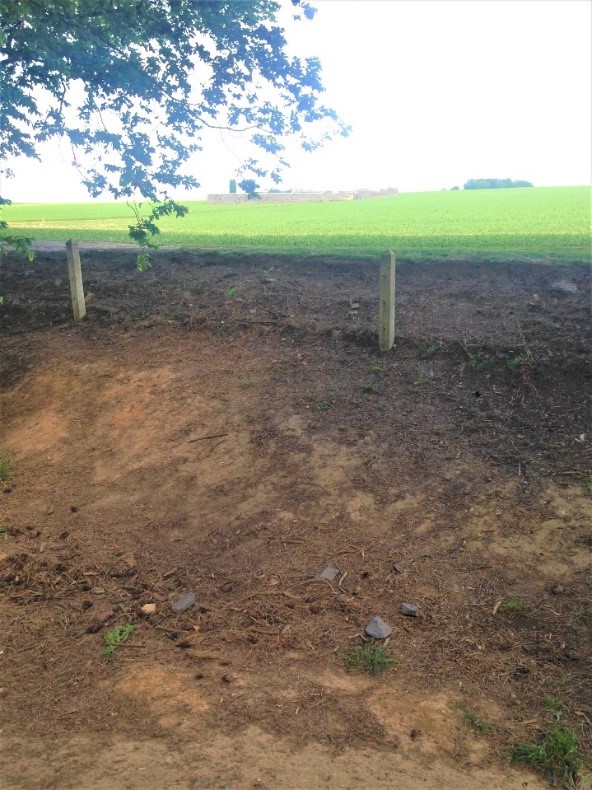Have a look under "Branch Meetings" to see our list of branch meetings and "Newsletters" for the latest newsletter items.
We also have a Facebook page where items are often posted -
Western Front Association North Wales Branch |
|||||||||||||||||||||||||||||||||||||||||||||||||||||||||||||||||||||||||||||||||||||||||||||||||||||||||
|
Meeting held at Craig y Don Sports and Community Centre, Queens Road, Llandudno, LL30 1TE |
|||||||||||||||||||||||||||||||||||||||||||||||||||||||||||||||||||||||||||||||||||||||||||||||||||||||||
|
Saturday 2nd March 2024 - 2pm |
|||||||||||||||||||||||||||||||||||||||||||||||||||||||||||||||||||||||||||||||||||||||||||||||||||||||||
|
Agenda: 1. Introduction and welcome 2. Remembrance, Exhortation and One Minute Silence 3. Information 4. Presentation 5. Any other business 6. Next meeting |
|||||||||||||||||||||||||||||||||||||||||||||||||||||||||||||||||||||||||||||||||||||||||||||||||||||||||
|
1. Introduction and welcome Darryl Porrino, Chairman, opened the meeting by explaining that this was also the Branch AGM, it being one year since the Branch re-formed. He welcomed all those attending, a very creditable turnout of twenty-three. |
|||||||||||||||||||||||||||||||||||||||||||||||||||||||||||||||||||||||||||||||||||||||||||||||||||||||||
|
2. Remembrance, Exhortation and One Minute Silence Les Lord asked the meeting to remember: 2nd Lieutenant George Edward Cates, VC 2nd Battalion, The Rifle Brigade Died of wounds, 9th March 1917. Age 24. Son of George and Alice Cates of Compton Road, Wimbledon. On the 8th March, 12nd Lt Cates was in charge of a party deepening a recently captured German position – the citation for the ward of the Victoria Cross records what happened next: - “For most conspicuous bravery and self-sacrifice. When engaged with some other men in deepening a captured trench this officer struck with his spade a buried bomb, which immediately started to burn. 2nd Lt. Cates, in order to save the lives of his comrades, placed his foot on the bomb, which immediately exploded. He showed the most conspicuous gallantry and devotion to duty in performing the act which cost him his life but saved the lives of others.” He was gravely wounded when the bomb exploded and died the next day. He is buried at Hem Farm Military Cemetery, Hem-Monacu, 13 miles south-east of Albert. |
|||||||||||||||||||||||||||||||||||||||||||||||||||||||||||||||||||||||||||||||||||||||||||||||||||||||||
|
3. Information AGM Chairman Darryl Porrino opened the AGM, explaining that each year officers of the Branch had to be nominated and elected by the members, with only members of the national WFA able to vote. The positions to be filled were Chair, Vice-Chair, Treasurer and Secretary -members were asked if there were any additional volunteers willing to stand. There being none, the existing officers were asked if they wished to stand for re-election, that being confirmed each officer was nominated, seconded and then elected by those present. The committee for 2024-25 is therefore: Chair– Darryl Porrino Vice-Chair – Steve Binks Treasurer – Sian Nevitt Secretary – John Storey Sian then outlined the current state of branch finances, with a printed version available to those who wanted a copy. Branch expenses over the past 12 months were £834, mainly room-hire, refreshments, etc, leaving funds available to the Branch of £94 cash and £1,413 in the bank. A further £600 is in a Barclays suspense account relating to the old branch set-up. This amount cannot be released until various formalities have been concluded - the original signatories for the Barclays account (not Fiona and Mark) both moved away from the area some years ago and so far, we have been unable to contact them. The alternative being worked on is for the WFA to formally confirm to Barclays that we are the successors to the old branch in order for the funds to be released. Darryl invited suggestions as to any changes or additions to the format of the meetings or branch activities. It was agreed that as we have a very healthy supply of donated books, more than sufficient to support the raffle, a selection would be available to purchase at each meeting. This would boost branch funds and be of more direct benefit to the members than selling excess stock at a book fair or similar. The members were happy with the format of the meetings and with the combination of local and branch speakers. This had been the norm for the past 12 months whilst the branch was re-established – the branch funds are now such that more high-profile national speakers could be engaged if we wished but the general feeling was that the branch had been well-served by the existing speaker policy and that should continue for the next 12 months. Darryl confirmed that we have a full speaker programme for the next 12 months and there were several more contacts who were willing to give talks after that. Steve raised the possibility of a Branch battlefield trip to France (sharing our own vehicles and renting a gite) in Spring 2025 and asked for an indication as to how many might be interested – a show of hands suggested that at least 18 were, in principle. Given that level of support we will develop the idea further over the coming months. Darryl concluded the AGM section of the meeting by thanking the members for their continued support – it had enabled the Branch to be resurrected and with that support the future looks rosy. Bulletin Magazine We still await the long-overdue arrival of the latest Bulletin to see if Darryl and Steve’s submissions have survived the Editor’s cut. Future meetings.
Branch Website Please continue to support the branch website by logging in to www.nwwfa.org.uk and also to contribute new content via Darryl on the branch email, |
|||||||||||||||||||||||||||||||||||||||||||||||||||||||||||||||||||||||||||||||||||||||||||||||||||||||||
|
4. Presentation The theme for the day’s presentation was Research and the various sources available to obtain further information about individual or events from the Great War. Joy Thomas went through the resources available that could supply local news and information. The British Newspaper Archive (on Find My Past) has 75.5m pages and growing. Free searches are available online but you have to subscribe to Find My Past to download any articles. Access to the database is also available free in many local libraries and record offices but usually have to pay per sheet for printing. A more limited number of newspaper archives are also available on Ancestry UK. Welsh Newspapers Online – this is a separate project run by the National Library of Wales. It is a free resource with over 15m articles available, including many in Welsh, and covers the period up to 1919. The archive covers the usual range of local news – enlistment, casualties, photos, letters home, etc. The original project was on microfilm with free access via local libraries but not all microfilms have been digitised yet. A word of warning from Joy – use several sources for cross reference as you cannot always believe what you read in the papers! Other less obvious sources which may provide good local colour or background are church magazines, year books, commercial directories etc. There have been numerous publications over the years relating to WW1, both by individuals and organisations, including local histories – again a word of warning, these can contain errors. Rolls of Honour are often found in public buildings and institutions etc, similarly Memorial Books, but these may not be complete lists so, again, check the detail. Check also war memorials, including those in churches, regimental chapels, together with plaques and private memorials, CWGC headstones and additions to family graves for any extra information or to confirm any detail you already have. Parish Registers may be available on Find My Past and Ancestry UK (for Wales). Next Keith Walker, ably assisted by Phil, mentioned the three main sources that can be used to track down and check an individual’s biographical details. Joy had covered the newspapers in some detail - the other two are the Commonwealth War Graves Commission and the National Census data. Census data is available from 1801, and at ten-yearly intervals, right up until the most recent in 2021 – with one exception, the 1931 census records were destroyed in the blitz. Not all years are very informative – the census for 1801, 1821 and 1831 record no personal details, these were collected for the first time in 1841. The really big change in information recorded came in 1911 when the head of household filled in the form, and in more detail, rather than the census enumerators who had compiled the household information previously. This did not necessarily mean it was more accurate and individuals might be missing for a variety of reasons e.g. suffragettes objecting to registration, hospitals and halls of residence not recording everybody in their care, felons not wishing to be traced etc. The 1921 Census is the latest that is publicly available, subsequent collections are closed under the “100 year” rule to protect the privacy of those still living. Although no census information is available post 1921 the 1939 National Registration Act data is publicly available and provides basic information for each household in the country – address, names, age, place of birth and occupation. In a similar vein to the census proper, the 1939 Register does not have a record every individual in the country – some individuals are missing for a variety of reasons. The Register was produced in anticipation of the creation of the NHS but was particularly useful when war broke out in September 1939. It was used for the issue of ID cards until 1952 and carried on for National Insurance and NHS numbers subsequently. In 1961 computers were used for the first time and in 2021 the form was available for on-line completion. Steve Binks then ran through “Number Crunching” – using regimental numbers to determine Great War service. Two questions asked most often are “where did he enlist/was conscripted?” and “when and where did he serve overseas?”. Most of the service records for other ranks were destroyed in the blitz so other sources have to be used, below is a selection: -
What if records are incomplete? Steve produced an example – Rifleman David Davies, South Lancashire Regiment. He died in the Great War, but his MIC and Medal Roll had no information and his service file was one of those destroyed in WW2. A search of the CWG site reveals three David Davies’ of the South Lancs killed in WW1. To identify the correct individual other resources have to be used- “Soldiers Died In The Great War” is available on Ancestry can provide basic information – the most useful being the regimental number for each person. The regimental Service Number was issued by regiments of the line and the numbers were sequenced – for example the Queens Regiment had the number sequence 1-9999. Regular, Special Reserve and Territorials all had different number sequences (of the same regiment) – for Great War service battalions the regiments generally used the existing regimental numbers sequence but other used a pre-fix so the end result can be confusing. A good website that has gone a long way to clarify army service numbers for the period 1881-1918 is: - armyservicenumbers.blogspot.com This has compared service numbers against regimental records but not all regiments have been processed to date. Medal Rolls are in alphabetical order – upon recruitment or conscription the individual was attested but not issued with a regimental number at that stage – the lists were taken away and the numbers issued at a later date. All Territorial Force members were renumbered in 1917 – for example all of the men in all companies of the 5th Royal Welsh Fusiliers were allocated numbers in the range 24001- 26500. Reverting to David Davies – Steve explained that using the “burnt records” (WO363) to search for regimental numbers as close to Rifleman David Davies as possible will narrow down the possibilities. His number was 242673 so first enter his regiment, the South Lancashire, and then the first 4-digits of his number, 2426 and two wild cards for the rest of his number, thus 2426**. This gave Steve several near hits from which he was then able to make safe assumptions about Rifleman Davies’ service. See Steve’s comment column in the table below. He was able to narrow the choice of likely service number by looking for a close match of regimental service numbers in the various information sources, particularly the medal rolls. The numbers either side of David Davies’ number are David E Davies (242662) and William Thomas (242675) – working out the number sequence between these two confirms that David Davies was given the original service number of 6521. It is a fairly safe assumption, from the info in the table, that David Davies went overseas in February 1917.
Darryl Porrino then concluded the days proceedings with a short presentation on the free websites you can use to find information about a particular individual. The free Welsh Newspapers Online can be a very useful site and has already been mentioned above. If the subject of your research is known to have died then the Commonwealth War Graves Commission (CWGC) is the first port of call when seeking information. Searching the database is relatively easy but can throw up long lists if looking for someone with a common surname – if you know the service number it will refine the list considerably. If you have tracked down the right individual it may be possible to obtain a photo of their grave or memorial via the Find A Grave website, this is an extensive list of worldwide burials going back to the 1800’s but a particular effort has been made to provide a photograph military casualty memorials from both world wars. If the subject of your search may have become a prisoner of war, then the International Red Cross archive can be most helpful. It can be difficult to search but start off with just the surname. You can provide further information but sometimes less is better. In theory the database will list names in alphabetical order but you may find that names have been misspelt (the database is in French but the information was provided to the IRCC in German so some spelling is a bit phonetic so search around your target name for any variations). The database is in the form of a card index, any reference numbers alongside the individual’s card will access other information held by the IRCC – this could be cards listing individual’s details, next of kin, place and date of capture, POW camps held in etc. There are also lists of soldiers repatriated during and after the war with dates. The most poignant are cards where next of kin have enquired as to whether their missing relative is being held a prisoner and the card records that a “negatif envoiee”, literally a letter saving “no”, has been sent. Darryl has put a short video on Facebook covering the above and will upload more info later. End |
|||||||||||||||||||||||||||||||||||||||||||||||||||||||||||||||||||||||||||||||||||||||||||||||||||||||||
|
5. Any other business There was no AOB |
|||||||||||||||||||||||||||||||||||||||||||||||||||||||||||||||||||||||||||||||||||||||||||||||||||||||||
|
6. Next Meeting The next meeting is April 13th, please note that this is the second Saturday of the month and that we will start at the later time of 2.30pm. The subject of the presentation is an intriguing one - “Four Nurses and One Vicar” by Keith Walker |
Western Front Association
North Wales Branch
Meeting held at Craig y Don Sports and Community Centre,
Queens Road, Llandudno, LL30 1TE
Saturday 3rd February 2024 - 2pm
Agenda:
1. Introduction and welcome
2. Remembrance, Exhortation and One Minute Silence
3. Information
4. Presentation
5. Any other business
6. Next meeting
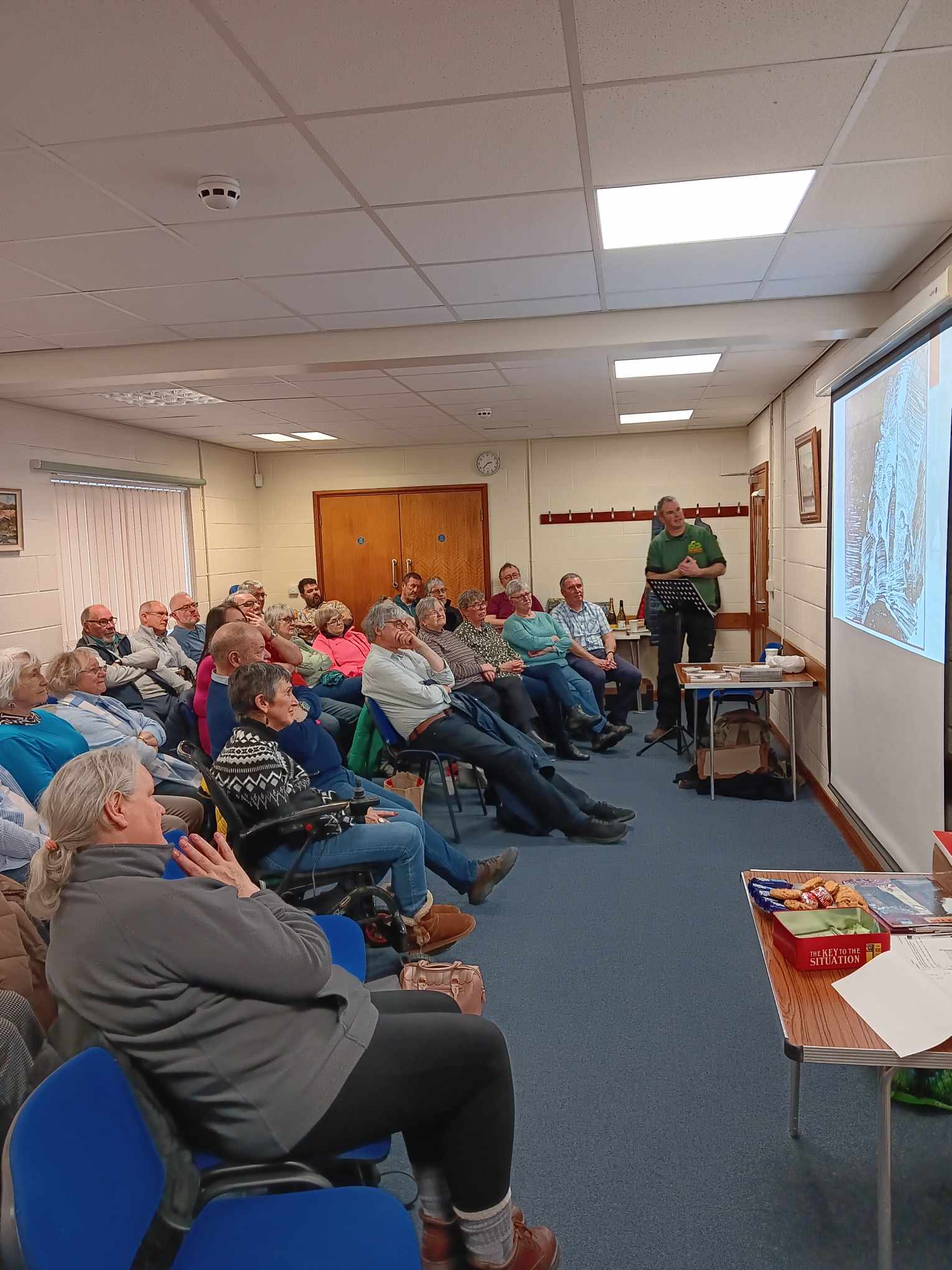
Our Guest speaker Adrian Hughes
1. Introduction and welcome
Darryl Porrino, Chairman, opened the meeting by welcoming a record attendance of 41 and those attending for the first time.
2. Remembrance, Exhortation and One Minute Silence
Darryl dedicated the meeting to the memory of our dear friend and branch member
Trevor Adams
“a man kind and generous with his time for the benefit of others”.
Steve asked the meeting to also remember:
1331348 Flt Sgt Melville Owen Samuels, RAFVR –
Pilot, aged 23. Buried at Heneglwys (St Llwydian) Churchyard, Anglesey
Son of Thomas Gibbon and Mary Elizabeth Samuels, Barons Court, London
425386 Flt Sgt Thomas Malcolm Clothier, RNZAF
Wireless Operator, aged 24. Buried at Chester (Blacon) Cemetery, Chester
Son of James and Edith Harriet Clothier, Matamata, Auckland, New Zealand
153823 P/O Charles Henry Melbourn Folkard, RAFVR
Navigator Pupil, aged 21. Buried at Oulton (St Michael’s) Churchyard, Suffolk
Son of Henry George and Ellen Louise Folkard, Oulton Broad, Suffolk
P/1947 Flt Lt Jan Mikolaj Radecki, Polish Air Force
Navigator Pupil, aged 30. Buried at Holyhead (St Mary’s) R C Cemetery, Anglesey
Unfortunately no family details are listed on the CWGC website
Sgt Sylvester Kenneth Yates, RAFVR
Wireless Operator Pupil, aged 20. Buried at Liverpool (Yew Tree) R C Cemetery
Son of Samuel William and Catherine Yates, Liverpool
On 16th February 1944 Avro Anson Mk1 N5130 left RAF Mona, Anglesey, on a training flight to Richmond, N Yorkshire, and return. It had climbed to 5,000ft when it crashed, 30 minutes after take-off, at Marl Farm, Llandudno Junction.
The cause of the crash was put down to structural failure of part of the wing.
There had been a number of similar Anson crashes recently and the air accident investigation report recommended more frequent checks on the airframe of Ansons as the wooden planes, of necessity parked outside in all weathers, were probably deteriorating more quickly as a result.
3. Information
Holyhead Royal British Legion – missing plaque to local VC
Holyhead British Legion premises recently underwent refurbishment during the course of which a memorial plaque to John Fox Russell, VC, MC went missing. Efforts to trace the plaque have so far been unsuccessful. The RBL have asked if Branch members be made aware of this and if they should see the plaque, or hear of its whereabouts, please could they pass any information on to the Legion at Holyhead. The Legion can be contacted by emailing David Wright on
Home Front Museum
The museum in Llandudno is open from March to October daily, except Sundays. Opening hours are 09.30-16.00. (Open Sundays during school holidays). See website for exact details https://www.homefrontmuseum.co.uk
Royal Welch Fusiliers Museum
The museum will be holding its RWF Fest in Wrexham again this October. Tickets are not on sale yet but keep an eye on their website for further information. https://www.rwfmuseum.org.uk
Branch Souvenir Mug
Darryl has commissioned a Branch souvenir mug, with the intention of presenting one to our esteemed speakers as a lasting memento of their visit to the Branch. If Branch members are interested in acquiring one then please speak to Darryl - cost £6.
Bulletin Magazine
Darryl has also submitted two articles for the WFA Bulletin (if the magazine is ever delivered we may yet find out if he has been successful - as of today, Feb 8th, it has not arrived!) Another article is in progress.
Future meetings.
April 13th, second Saturday of the month, 2.30pm start. “Four Nurses and One Vicar” – Keith Walker
May 4th : “Keeping the Home Fires Burning” – Phil Carradice
June 8th, second Saturday of the month, 2.30pm start. Open day for members to discuss any WW1 topic or item of interest
July 13th, second Saturday of the month, 2.30pm start. Heswall Methodist Church Memorial – John Crowther
August 3rd: Away Day – “Great War Graves In Rhyl Town Cemetery” – Darryl Porrino
September 7th : Fred Birks VC, MM – Tony Griffiths
October 5th : “Enhancing The Redemption Narrative. The 38th (Welsh) Division After Mametz Wood 1916” - Jon Williams
November 2nd : TBC
December 7th: Christmas Social.
Branch Website
Please continue to support the branch website by logging in to www.nwwfa.org.uk
and also to contribute new content via Darryl on the branch email,
4. Presentation
Adrian Hughes of the Home Front Museum, Llandudno gave a highly amusing and well-illustrated talk on:
Llandudno in The First World War
Adrian opened by explaining that when Archduke Ferdinand was assassinated in June 1914, it was a glorious summer and the first indication of the events to come was when the band at the Pier Pavilion interrupted its schedule to play Chopin’s funeral march.
The town at the time was host to some 7,000 Territorials enjoying their summer camp at Deganwy Common and a further 3,000 at Morfa.
Britain declared war on the 4th August and the troops were soon gone, recalled to their home areas for mobilisation.
The first local casualty was Daniel Evans, who was injured on the 6th August when the cruiser HMS Amphion was mined in the Thames estuary with the loss of 132 sailors - the first Royal Navy ship loss of the war. Daniel was rescued and after convalescence he was posted to HMS Milne. In 1915 Danile was invalided out of the Navy with a neurological disorder and he returned to Llandudno.
Daniel subsequently re-enlisted and joined the Royal Garrison Artillery and went to the Western Front where he was gassed and returned to Llandudno to convalesce from where he was medically discharged in January 1919. Later that year he was admitted to Llandudno hospital where he died on 2nd October 1919, aged 25. He is buried at Llanrhos churchyard.
On the first full day of the war HMS Amphion and her accompanying destroyers sank the SMS Konigin Luise, a German pleasure steamer converted to auxiliary minelayer, off the mouth of the Thames. Amphion was returning from patrol early the following morning when it struck a mine, probably one laid by the Konigin, and subsequently blew up when fire reached the No1 magazine.
Back in Llandudno mobilisation was in full swing and the first fourteen volunteers were given rousing send off with a band accompanying them on a march to railway station.
The town council asked Llandudno Town FC to stop playing matches, suggesting that anybody fit enough to play football should volunteer for the army, the club refused but did invite the Chairman of the UDC to address the players on the pitch.
Llandudno’s first fatality was 6679 Private Llewelyn Rathbone Roberts, whose father ran the Albert Hotel. Llewelyn was a pre-war Regular who had seen service in the Boer War and was working as postman in Oswestry when recalled to the Colours with the Royal Welsh Fusiliers. A week after war was declared he landed at Rouen with the 2nd Battalion and fought at Mons – on the 9th September he was killed during the first Battle of the Marne, aged 34. He is buried in the Commonwealth War Graves plot in the communal cemetery at La Fuerte-Sous-Jouarre’ on the river Marne.
Requisition was soon brought in to service the needs of the rapidly expanding army – the first to go were the beach donkeys that had given so much pleasure to holidaymakers, followed soon by the fittest delivery ponies, leaving tradesmen with the weakest and oldest.
The requisition of three pleasure steamers plying the busy route between Liverpool and the North Wales coastal resorts soon followed. A regular of the Liverpool-Llandudno route was the La Marguerite, built in 1894 for cross-Channel trade from Tilbury but transferred in 1904 to the Liverpool routes.
The 6th, City of London Regiment, were the first troops to be carried by her during WW1, from Southampton to Le Havre. The paddle steamer covered over 52,000 miles during the war and carried 360,000 troops to France. After the war she returned to the Liverpool – Llandudno route but she was worn out by the intensive war service and broken up in 1925.
Her bell was presented to the City of London Rifles at a ceremony at their HQ, 57a Farringdon Road, EC1 on 10th March 1927, it is now in the regiment’s memorial chapel at St Sepulchre Church, London.
Upon the outbreak of war many Belgians became refugees and 250,000 landed in Britain, 58 came to Llandudno where they were given a civic reception and billeted at Lansdowne House. Soon afterwards 80 wounded Belgian soldiers arrived and were housed at Lady Forester’s convalescent home which was converted to a hospital for their use.
One Belgian soldier recuperating at Lady Forester’s was Nestor Swill, who ran away from home at thirteen to fight the Germans. He joined the 11th Infantry Regiment and was given the job of messenger. He was wounded at Haacht by an enemy shell close to the frontline and knocked unconscious by the blast. Temporarily blinded and wounded by shrapnel, he lay there until a fellow Belgian soldier came to his aid. The badly injured Nestor ensured that the message was delivered to its recipient by another dispatch rider before being taken to hospital in Antwerp and subsequently to Llandudno.
Numerous other hotels and empty buildings around Llandudno were used for hospital and convalescent purposes. The Red Cross took over a property in Church Walks to provide 25 beds and then in 1915 a former YMCA hostel was converted to the Balmoral Red Cross Hospital to double the number of beds to 50. By 1917 this had doubled again to 100 and huts in grounds of Trinity Church took the Red Cross total to 125.
Not all recovered - some of those who died, both patients and staff, are buried on Great Orme, including VAD nurse Alwin Katrin Williams who died of Spanish Flu in November 1918 after spending four years nursing wounded soldiers.
Plas Tudno in Church Walks, used by the Red Cross from 1914, was the scene of a curious demonstration in 1915 when the patients discovered that a medical orderly was a German national - Robert Hempel was dismissed, arrested by the police and interned at Queensferry.
Another bizarre character that made the local papers at the time was Private William Law, who recounted gripping tales of his life as a cowboy before he returned to this country to serve it in its hour of need. His increasingly extravagant claims included turning down a commission, feeling that he could teach his fellow soldiers better from the ranks; being sent to the front after only 3 months as did not need training; rescuing 3 wounded men for which he was awarded DCM then subsequently being awarded the VC!
Needless to say there is no evidence of that any of this was true but no doubt he managed many a free drink on the strength of his somewhat dubious claims!
As Adrian stated, the following tale is worthy of a film……
On the night of August 13, 1915, three German naval prisoners escaped from Dyffryn Aled Hall, Llansannen, near Denbigh. The 18th century mansion was being used as an officers prisoner of war camp when Korvettenkapitan Hermann Tholens, Kapitanleutnant Heinrich von Hennig and cell-mate Kapitan Wolff-Dietrich Baron von Helldorf, prised apart the bars on a window and walked out of the main gate of the camp dressed in civilian clothes .
They walked the twenty miles to Llandudno, arriving shortly after dawn. Confident that they would not be missed until the camp’s morning roll call, the three enjoyed a meal in a café before hiding on the Orme for the rest of the day.
The previous December a message had been smuggled from the camp during a Red Cross prisoner exchange, requesting that a submarine rendezvous with Tholens and von Hennig off the Great Orme. Confirmation was sent back in code to the pair at the camp in a series of letters and the date was set.
The U-38, captained by Max
Valentiner, had made her way from Wilhelmshaven to the North Wales coast, torpedoing a number of merchant vessels on the way. She arrived off the Great Orme on the evening of the 13th.
At dusk the Germans left their hideout and scrambled down the cliffs to rocks below the Great Orme’s lighthouse and signalled to the submarine but there was no sign of it..
It had been arranged for the same to happen on three consecutive nights so they laid up once more on the Orme during the day. At dusk the three again made it to the foot of the Orme and signalled out to sea but again with no result.
Tholens and his non-English-speaking compatriots gave up and did not try a third time, assuming that the submarine was not coming.
The Germans, tired and hungry, decided to walk back into Llandudno and try to get a train to London. They split up and Tholens went into a café where a waitress, Nellie Hughes, served him coffee and piece of cake – as he left the cafe he was approached by Police Constable Morris Williams who asked his identity. He was arrested and escorted to the police station.
In the search for the other two escapees the authorities staked out the railway station and even stopped and searched a London-bound train at Colwyn Bay.
That evening a taxi driver noticed two men standing under an ornamental lamp in North Parade in the pouring rain. He pulled over and asked if they needed a cab - in broken English they asked to be taken “to the colonel” so he took them to the headquarters of the London Welsh battalion where they surrendered.
All three were taken back to the camp and after being tried by a military court at Chester Castle, they were sentenced to 84 days imprisonment in Chelmsford Gaol before being sent back to Llansannen.
In a final twist to an extraordinary story it would appear that the U38 did make the rendezvous as planned on the 13th, and also on subsequent nights, but it was so close inshore that it was obscured from the view of the escapees by a projecting limestone buttress and similarly the crew of the submarine could not see the prisoners signals.
The declaration of war came at the height of the holiday season in August and September of 1914 and was bad news for hoteliers. The local MP David Lloyd George was a keen supporter of the concept of a purely Welsh army corps being raised and saw the opportunity of using seaside resorts to house the New Army units. Some 6,000 men were billeted and trained in Llandudno between 1914 and Sept 1915.
Billeting payment was set at 3s/3d per day but so enormous was the expense that it was soon cut to 2s/2d. The accommodation provided was very basic, four or five men to a room with all the nice hotel furniture stripped out and often just mattresses on floor. The same food ration was provided everywhere irrespective of the class of accommodation provide.
Llandudno publicans were also delighted by such an influx of men but it was not long before trouble broke out. The authorities forced the pubs to close at 9pm and women were not allowed in pubs after 6pm.
The creation of a Welsh division indirectly led to an unfortunate incident in 1915. In the late 1900’s the then Lord Mostyn acquired a pair of Kashmiri goats from the Royal herd at Windsor, these multiplied and some were released on the Great Orme where they thrived despite the harsh conditions and sparse vegetation. The greatly expanded Welsh regiments had need of more regimental mascots and so the goats were herded together on the edge of Orme with a view to selecting a few choice examples. The exercise backfired when the goats stampeded over the edge – such an unintentional cull of the animals has had no long-term effect on numbers and the herd thrives to this day, much to the chagrin of those residents whose gardens are regularly pillaged by the animals.
The pinnacle of the military presence in Llandudno was St Davids Day, 191. The massed ranks of the Royl Welsh Fusiliers paraded through the town which was suitably decorated for the occasion. After the parade the men were given the rest of the day off and their families came from far and wide to share the day, especially as training was by now nearly complete and overseas service not far away. It is estimated that an extra 13,000 people were in town that day, most arriving by train. The patriotic fervour was such that over 100 new recruits were signed up that day.
On the 13th June a final parade took place on the seafront. As the men fell in the RSM feared that an awkward situation would break out as local girls clung to most of the men. Fortunately military discipline was maintained and all Llandudno turned out to see the troops march to railway station. By the autumn of 1915 all the Royal Welsh Fusiliers had left.
Not to be outdone, the Royal Navy also made it’s presence felt in Llandudno but in an unexpected way. Airships were common sight along the coat, their relatively slow speed and ability to stay aloft for hours made them particularly suitable for anti-submarine patrols and to protect convoys.
In April 1918 a Naval airship took off from RAF Llangefni and had patrolled Liverpool Bay as far north as Formby lighthouse when it suffered engine failure. A “mayday” message was picked up by an armed trawler which towed the airship back to the end of Llandudno pier. A company of Royal Engineers was summoned, they took over the rope and “walked” the airship down the pier and along the Prom to the Hydro Hotel where it was secured to lamp posts.
A huge crowd gathered but had to be moved back by the police as many were smoking - not a good idea in the presence of such a large volume of hydrogen gas.
The Naval pilot was invited into the Hydro for a bath and a meal whilst awaiting the arrival of mechanics from Anglesey. Suitably refreshed he came down to dinner in the restaurant but he had no tie! The manager lent him a particularly gaudy one, distinctly non-regulation and the cause of great amusement to fellow diners. The airship was duly repaired and flown back to Anglesey that evening.
Another incident occurred when a low flying airship repeatedly circled the Oval cricket ground during a match – it was only when a message was dropped that it was realised that it was in trouble and wanted to land on the pitch. Presumably the match was abandoned.
The declaration of an Armistice in November 1918 was celebrated in style, the town was decorated and impromptu parade took place accompanied by marching troops and an airship. In the evening a free concert was organised at the town hall and beacons lit on the hills around the town.
The end of the war brought mixed feelings - relief that many were spared, sorrow for those lost, pride in heroic achievements, years of continued suffering for some.
Four of the five Arnold brothers enlisted and all four survived.
Arthur Arnold enlisted in the King’s Liverpool Regiment before joining the Tank Corps. In September 1916 he took part in the world’s first tank action at Flers, commanding his tank ‘Dracula’ – after breaking through enemy lines, and despite being wounded in the leg, he went to the aid of another tank, rescued a wounded man and then brought his own tank back safely. He was awarded the Military Cross for this action - after recovering from his wounds in Britain, he re-joined the Tank Corps. In a later skirmish with the enemy was shot through the lung and taken prisoner.
Clement Arnold also enlisted in the King’s Liverpool Regiment and was then commissioned into the Tank Corps. In August 1918, Clem was in command of his Whippet tank “Musical Box” which broke through enemy lines at Amiens and caused mayhem amongst the German artillery and reserve troops until knocked out by a direct hit and set on fire. Clem pulled his two crew men to safety and they rolled on the ground to put out their burning uniforms. Surrounded by enraged German soldiers, one of his crewmen was shot dead, Clem and the other were beaten until rescued by a German officer. Clem was awarded the Distinguished Service Order for his actions that day. He was sent to Freiburg as a POW where he met up with Arthur.
The oldest, William, was seriously injured at the Battle of Loos when struck by a hand grenade and sustained a deep wound in the thigh. He recovered and joined the staff of the 2nd Tank Brigade, for service with which he was awarded the Distinguished Service Order.
The youngest brother, Frank, was wounded at Hooge while successfully attacking three German slit trenches. When returning his party came under fire from machine gun fire and he was wounded in the shoulder and chin. Frank was awarded the Military Cross.
After the war Llandudno was presented with a tank from the action in 1917 at Cambrai as a thank you for raising over £400,000 as part of the war-time National savings campaign. Clems celebrated action with “Musical Box” was well known and he was invited to drive the presentation tank to a prominent site at the entrance to Marine Drive where it was put on display.
In the late 1920’s the UDC wanted the land for parking and decided to get rid of it. The tank was sold to a Manchester scrap dealer for £1 in 1931.
Other families were not so fortunate - Elizabeth Basford lost her husband, three brothers and a cousin. 218 residents of Llandudno died as a result of war service – 15% of those who enlisted or served in some capacity.
In June 1919 the UDC gave every school child a peace beaker and those who served a certificate of thanks on behalf of the people of Llandudno. A special Death Plaque was given to the relatives of those who had died.
Commemoration took other forms as well – 22 Llandudno men died on the Somme, including the fighting by the Welsh division to take Mametz Wood. The nearby village of Mametz was totally destroyed in the fighting and as an act of remembrance and
friendship the people of Llandudno adopted Mametz and collected funds for its reconstruction.
The war memorial in Llandudno is a lasting tribute to the men of Llandudno who died for their country. It was funded by public subscription and unveiled in 1922, the surplus funds being sufficient to build the maternity hospital.
5. Any other business
Darryl outlined plans for the AGM and suggested that, in addition to the formal business, the meeting should be in the form of an open forum where members can make suggestions as to what they would like to see/discuss/hear about/do/change etc.
6. Next meeting
March 2nd: Branch AGM and Research Day 1.30 for 2pm
End
North Wales Branch January Meeting
Saturday 6th January
|
The Western Front Association North Wales Branch |
|
Meeting held at Craig y Don Sports and Community Centre, Queens Road, Llandudno, LL30 1TE |
|
Saturday 4th November 2023 - 2pm |
|
Agenda: 1. Introduction and welcome 2. Remembrance, Exhortation and One Minute Silence 3. Information 4. Presentation 5. Any other business 6. Next meeting |
|
1. Introduction and welcome Darryl Porrino, Chairman, opened the meeting by welcoming all those present, particularly those attending for the first time. Attendance was a record headcount of thirty-seven. |
|
2. Remembrance, Exhortation and One Minute Silence Stephen Binks asked the meeting to remember:- 77391 Private Percy Carter, 14th Battalion, Royal Welsh Fusiliers Son of Robert and Lydia Carter of Roath, Cardiff, Percy died on the 4th November 1918 during the Second Battle of the Sambre. The 14th Battalion, Royal Welsh Fusiliers, were engaged as part of the 38th (Welsh) Division, attacking up to and through the Forest of Mormal towards Mons. Percy was nineteen and is buried in the CWGC plot in the communal cemetery of Forest, a small village of five miles SE of the Forest of Mormal. Darryl then led the meeting in the Minutes Silence followed by the Exhortation. |
|
3. Information Latest Trench Lines Newsletter from the WFA Darryl asked if the WFA members present had received the latest Trench Lines newsletter email from the WFA. He was particularly pleased that the North Wales branch had been mentioned in the upcoming branch events section. The newsletter featured some particularly interesting developments, notably digitisation of all 40 years of back-issues of “Stand To” (and other publications) and the ability to search for topics. Non-members were invited to consider joining as the annual subscription of £29 allows access to an immense the digital resource including TrenchMapper, the pension records, webinars etc. General Information Darryl has made another submission to the “Bulletin”, summarising the recent Branch activity, and we await with interest to see if it will be published. All our allocation of WFA 2024 calendars have been sold, contributing £50 to branch funds. The original branch digital projector had given up the ghost and a new one had been purchased for £180. Leaflets and business cards with information about the branch, and contact details, are available for members to distribute to any interested parties or organisations. Branch Website As Usual – A reminder to please visit the branch website: www.nwwfa.org.uk Trevor’s son-in-law has done a very professional job in updating the site. Please can members contribute new content (via the branch email, Future meetings. - January: Niall Cherry will give a talk on Mons and the make-up of the BEF in 1914 - February: Adrian Hughes, of the Home Front Museum, Llandudno, will give a talk about Llandudno in the Great War |
|
4. Presentation The Knutsford (and area) Lads Who Never Came Home By Tony Davies Darryl introduced the days speaker, Tony Davies from Knutsford. Tony is an historical interpreter, historian and author of several books telling the stories of men from Knutsford and nearby localities who died in the Great War. He explained that his interest in WW1 stems from an early age when he was shown a letter home that had been written by his Grandfather – who had enlisted aged fourteen. His Grandfather was reluctant to talk about the war, except when watching programmes about it on TV, when he would open up and make all sorts of interesting comments and observations. Another spur to Tony’s interest in the men of Knutsford and its surrounds may have been when he was waiting to get married in St Peter’s Chapel on the Tabley estate. He noted the fine war memorial plaque with the names of nine men from the estate who were killed in the Great War and wondered about their lives and background. In a wide-ranging talk Tony drew upon the results of his research to talk about the Knutsford area at that time and to introduce several of the personalities involved. He started with Madeline Simmonds, a vicar’s daughter from Knutsford. She is the only known female recruiting officer and was responsible for the recruitment of more than four hundred soldiers before conscription. Next came Arthur John Berry, a footman at Toft Hall, near Knutsford. He joined the Manchesters in 1915 and had the usual photo taken in his new uniform before going overseas. A boyhood friend who had joined the Artists Rifles had his photograph taken at the same time and Arthur borrowed his swagger stick for the photo. After training Arthur went to Gallipoli with the 1/6th Battalion of the Manchesters in October 1915, and in January 1917 from there to Egypt. The battalion returned from the Middle East to France and Arthur was promoted to Sergeant. He was awarded the Military Medal for taking command during an attack on enemy lines after all the officers had been killed or wounded. In April 1918 he led a successful bombing raid on a German machine gun post but upon returning to the British front line he was killed in an accident when a fellow soldier dropped a live grenade. Arthur was killed on St George’s Day, 22nd April 1918 and is buried in Couin New British Cemetery, Pas-de-Calais, France. In the course of Tony’s educational activities he attended the Tatton Flower Show, where he was approached by a member of the public who said they had some family WW1 memorabilia and would he like it? They duly presented Tony with some photo’s of Arthur, his memorial scroll – and the Artist’s Rifles swagger stick! The next profile was of Private Sydney Leicester, who was born in Tabley and went on to work for the Cheshire Lines Railway Company. Sydney was a sniper with the 12th Battalion, Manchester Regiment when, on 7th July 1916, the battalion was ordered at very short notice to attack Quadrangle Support trench, an earlier attack by two other battalions having failed. The attack was also a complete failure and led to the loss of most officers and 539 OR’s killed, wounded or missing. Sydney was one of the missing and is commemorated on the Thiepval Memorial. His name is one of those recorded on the roll of honour in St Peter’s chapel on the Tabley estate. In similar vein Tony went on to discuss other local men – such as John Hulse, a budding poet from Peover. He was killed on the 12th April 1917 whilst serving with the Machine Gun Corps and is commemorated on the Ploegsteert Memorial. Fred Dickens from Great Budworth - he joined the Cheshires, serving with the 9th Battalion and was wounded at Gallipoli on the 25th August. After spending time at a dressing station he was evacuated by hospital ship bound for Egypt but unfortunately his condition deteriorated and he died of wounds on the 6th September. He was buried at sea and his family later received a long letter from Sister Cunningham, one of the nurses which had cared for him, in which she recounted how he was thinking of the family and how bravely he bore his suffering. Ernest Williams, son of a publican in Knutsford, joined the Manchesters in 1914 and was sent to Gallipoli, arriving on the 5th May. 10 days later he was one of a party of four who tried to recover a wounded comrade lying out in the open. They were ambushed by the Turks - Ernest was one of two killed, a third was wounded, the fourth regained the trenches unscathed. Ernest’s body was not recovered and he is commemorated on the Helles memorial. John and Mary Vernon of King Street, Knutsford lost the two youngest of their three sons, both had joined up in 1914. The youngest, Percy, was with the 70th Field Company, Royal Engineers, when he was wounded at Loos on 18th October 1915. He died two days later and is buried in Lillers Communal Cemetery. The middle brother, Harry, served with the Royal Field Artillery and was killed by a direct hit on his gun on 3rd June 1917, two years and a day after his arrival in France. He is buried in Bunyans Cemetery, Tilloy-les-Mofflains, Pas de Calais. George Riley was born on the Tabley Estate and was working at a chemical works in Lostock Gralam when he joined up in 1915. He was not a well man and spent two years with the Reserve battalion of the Cheshires but in 1917 he was sent to front, joining the 16th Battalion of the Cheshire Regiment. On the 21st October 1917, the Cheshires attacked the German positions through the shattered remains of the Houlthust Forest but were unable to hold the ground gained. George was reported missing on the 22nd but the Germans found him 3 days later and he was transferred to their military hospital in Ghent where he died 10 days later. He is buried in Ghent City Cemetery, Belgium A particularly sad and well known account related to James Holland, who worked on the Arley estate and enlisted at the outset of war in 1914. James served with the 10th Battalion, Cheshire Regiment and was promoted to Lance Corporal. In May 1916 he was in charge of a small party of men holding a post in a sap ahead of the front line. James was in ill health, suffering from loss of blood due to chronic piles and severe headaches. He requested to see the MO, but his Sergeant told him to wait for the officer to come round. In the darkness a number of Germans approached the sap and jumped into the trench, intending to surrender. Subsequent events are unclear but it would appear that the party thought they were under attack and ran back to the front line, despite orders being given to the whole battalion that their positions should be held at all cost. Holland seen to be firing his rifle but when he reached the main trench he did not have his weapon. James was charged with cowardice in the face of the enemy and leaving his post without permission from an officer. By the time of his Court Martial many of the potential witnesses for the defence were either dead or had been posted. He was sentenced to death. The 10th Battalion had a somewhat poor reputation and although the Divisional commander recommended clemency on the grounds of ill health the Corps commander (Byng) decided that an example should be made. James was executed on the 30th May 1916. The men under his command, those still alive, were exonerated. James is buried in Ecoivres Military Cemetery, Mont St Eloi - he was given a posthumous pardon in 2006. Finally, an unusual account concerning Haron Baronian, son of Zarch, a wealthy cotton trader, and Shusha Baronian, both officially Turkish citizens but of Armenian heritage. Haron was a clever student and gained a place at Manchester University (UMIST) where he studied Chinese with a view to entering his father’s business, which traded mainly with China. Whilst at university he joined the OTC where he also excelled but when he volunteered in January 1916 he was refused a Commission, no doubt due to his foreign background. Bizarrely he was posted to Gallipoli with the 8th Cheshires, which would have been doubly awkward if he had been captured, being of Turkish parentage and also given the enduring enmity between the Turks and their Armenian minority. He survived the Gallipoli campaign despite being wounded in the hand during his time there. The Cheshires then transferred to Mesopotamia, again fighting the Turks, and here he was killed, in fighting near Deli-Abbas, Iraq, on the 11th April 1917. He is commemorated on the Basra Memorial. The family commissioned a life-size bronze statue by Hamo Thornycroft RA, this stood for many years in the garden of the family home on Legh Road, Knutsford. It was donated to the local community by his sister when the family moved away from the area in the 1930’s and was adopted as part of Knutsford’s War memorial. The official memorial was the town’s War Memorial Hospital, controversially demolished last year - the statue has now been repositioned and rededicated as Knutsford’s main memorial to those who died in both world wars. The statue shows Haron in uniform, not saluting as many assume, but shielding his eyes from the sun as he looks for his parent when boarding his train at Manchester Victoria station – his parents last vision of him. Photographs of the soldiers featured in these minutes are from the excellent website and ongoing project “The Cheshire Roll of Honour” – visit www.cheshireroll.co.uk for more information. Tony requested that, in lieu of a speaker’s fee, a donation be made by the Branch to the Royal British Legion, which the Branch are happy to do so. Two of Tony’s books. Others in the series are “The Tabley Lads Who Never Came Home” “The Great Budworth Lads Who Never Came Home” |
|
5. Any other business The next meeting will be the Christmas social event which will include a quiz (set by Steve) and refreshments. Members and guests are invited to bring in their favourite book or artefact that they may wish to describe to the assembled multitude. Darryl will send an email with further information and also requesting numbers for catering purposes |
|
6. Next meeting The next meeting will be on 2nd November at Llandudno Christmas Social Event at Craig y Don End |
Broughton History
There is a new book by Peter Chadwick on the men and women from Broughton, Brymbo and Gwersyllt areas who served in WWI - click here.
Summer Wanderings 2023
Keith Walker
One of the trips which my son Philip and I took this summer was to the Imperial War Museum, Duxford. On the way, we called at the National Memorial Arboretum Staffordshire. We were looking for one of our soldiers who is commemorated in my book Broughton Remembers 1939-45 Korea 1950-53.
The soldier was Kenneth Truman s/n 419733 Royal Military Police, date of death 22nd July 1951. Corporal K Truman enlisted in the RWF in 1938 and served with them until 1943. He transferred to the Royal Military Police. He was demobbed in Germany in 1949 and returned to the UK, when he then joined the British Transport Police.
He was recalled to the colours in 1950 and posted to Korea. Unfortunately, during a period of R&R in Japan, Corporal K Truman dived into the sea, hit his head and drowned. He is buried at Hodogaya Cemetery, Yokohama, Japan, Plot B Row D Grave 1. He is commemorated on the Pentre Broughton Memorial Gates and the National Memorial Arboretum Panel 46. We paid our respects, took photographs for reference, then spent a little time looking at some of the new memorials.
We then travelled a few miles down the road to the Staffordshire Regimental Museum.
If anyone would like to visit the address is:-
Staffordshire Regiment Museum
D.M.S. Whittington
Lichfield
Staffordshire
WS14 9PY
Openings Hours are 10am – 4pm, entry fee £6-00
It was our first visit and what a gem it turned out to be. The museum is quite small. It is based in a single storied building. It has displays on the history of the regiment, and the regiment’s place in the previous engagements which it took part in, over its history. The highlight for me was a display with regimental medals in it.
In its history, the Staffordshire Regiment was awarded fourteen Victoria Crosses. That is: one in the Indian Mutiny; two in the Zulu War; eight in the Great War; and three in World War Two.
Of interest to WWI experts are the medals awarded to the most decorated other ranks soldiers.
L/C William Harold Coltman s/n 241028, 1st/6th North Staffordshire Regiment
He was awarded:-
Victoria Cross, Distinguished Conduct Medal and Bar, Military Medal and Bar, 1914-15 Star, 1914-18 War Medal, 1914-18 Victory Medal with Oak leaf M.I.D , 1939-45 Defence Medal , George V1 Coronation Medal, Queen Elizabeth II Coronation Medal, Special Constabulary Long Service Medal. Croix de Guerre. Note. He never wore the Croix de Guerre.
Bill Coltman was born on the 17th November 1891 at Rangemore, a village near Burton on Trent. After leaving school, Bill worked as a market gardener. He was a member of the Plymouth Brethren. He enlisted in the Army in January 1915. He served in the North Staffordshire Regiment 1/6 Battalion this was a TA battalion. After basic training, the battalion embarked and arrived in France on the 28th June 1915. There is some confusion as to what point did Bill request to become a stretcher bearer. Some reports state that it was after his basic training. Others state after his first time in the trenches at the battle of Loos. Because of his religious beliefs his request was granted. All his gallantry awards were issued to him as a stretcher bearer.
After the war Bill returned to his job as a gardener. In the second world war, he was enlisted and was commissioned as a lieutenant in the Army Cadet Force. He was also a Police Special Constable. Bill retired in 1963. He died on the 29th June 1974 aged 82. He is buried in the churchyard of St Mark's, Winshill.
Also on display are the Decorations and Medals of:-
Brigadier General L J Wyatt
GOC British Forces France and Flanders
He was the man who chose the Unknown Warrior
He was awarded:-
- Distinguished Service Order
- Queen's Sudan Medal
- Queen's South Africa
- King's South Africa
- 1914-15 Star
- 1914-18 War Medal
- 1914-18 Victory Medal
- 1937 Coronation Medal
- Legion d Honour
- Portuguese Military Order of Aviz
Louis John Wyatt was born on the 14th September 1874. He died on the 28th April 1955, aged 81
From this museum we travelled to our hotel in Duxford after a long but very interesting day.
During the next two days we spent a lot of time in the Land Warfare Museum which has many WWI exhibits such as Artillery pieces, lorries, narrow gauge locomotives and small arms. The IWM Duxford is primary an air museum, but the land warfare museum is well worth a visit for those with WWI interests
The next day on our way home we called at the Cambridge American Cemetery (Maddingley). The Cemetery has 3,811 graves and on the memorial wall 5,127 names of men with no known graves. Of interest two names caught my attention:- Glen Miller and Joseph P Kennedy. It was amusing to watch some people look for Glen Miller's name but could not locate him due to his real name. On the wall he is listed as Alton G Miller. Some of the visitors did not believe me when I explained. They would then Google his name. The Cemetery visitor centre and chapel are well worth a visit.
So ended an interesting and informative few days away.
Acknowledgements and references:-
The Staffordshire Regiment Museum
Medal Yearbook published by Token Publishing Limited
The Story of Two Crosses published by Decapolis Press Publications 2008
|
Meeting held at Craig y Don Sports and Community Centre, Queens Road, Llandudno, LL30 1TE |
|
Saturday 7th October 2023 - 2pm |
|
Agenda: 1. Introduction and welcome 2. Remembrance, Exhortation and One Minute Silence 3. Information 4. Presentation 5. Any other business 6. Next meeting |
|
1. Introduction and welcome Darryl Porrino, Chairman, opened the meeting by welcoming all those present, a “cracking” turnout, given that the meeting coincided with events in Wrexham and Rhyl. Attendance was 23 members and guests, with apologies received from a further 10. |
|
2. Remembrance, Exhortation and One Minute Silence Stephen Binks asked the meeting to remember:- 47246 Corporal Jonnie Williams, 412th Protection Company, Royal Defence Corps Born in Colwyn Bay in 1878, he was drowned when RMS Leinster, sailing from Kingstown (Dun Laoghaire) to Holyhead, was torpedoed by a German U-boat on the 10th of October, 1918 . Corporal Williams is buried at Grangegorman military cemetery, Dublin. Darryl then led the meeting in the Minutes Silence followed by the Exhortation. |
|
3. Information Branch Website As Usual – A reminder to please visit the branch website: www.nwwfa.org.uk Trevor’s son-in-law has done a very professional job in updating the site. Please can members contribute new content (via the branch email, Post Meeting Note Darryl has finally, after months of trying, been able to get a resume of the branch activities to date published in the September issue of Bulletin. Thank you, Darryl, for your perseverance! Future meetings. - December: Branch Christmas social, including quiz, member’s favourite books and buffet. - January: Niall Cherry will give a talk on Mons and the make-up of the BEF in 1914 - February: Adrian Hughes, of the Home Front Museum, Llandudno, will give a talk about Llandudno in the Great War |
|
4. Presentation Flint War Memorial Darryl introduced the days speaker, Peter Metcalfe, a regular attendee at the meetings and a family historian, whose talk was about the servicemen commemorated on the Flint War Memorial. Peter started his research in 2005 and had his first book published in 2014, followed by a second volume in 2022. (“Remembered Again; Recalling Flint’s Fallen Heroes of WW1”, volumes 1 and 2). Peter’s presentation was delivered through a series of photographs and images, supported with newspaper articles and his own research notes. The first of 14 servicemen stories (and 1 civilian) was the story of :- Private Harold Jones, 10th Battalion, Royal Welsh Fusiliers. Harold was employed as a shop assistant and played football for a team called “Flint Wednesday”, so named since the players were all traders or, in Harry’s case, worked for a trader. He married Sarah Helen Roberts in November 1914, and they then ran a shop of their own. Harry enlisted in the army in late 1915 and subsequently posted to France. His battalion was fighting in the Monchy trenches, which were heavily shelled throughout the day, and Harry was killed in action along with five others. He is buried in Delville Wood cemetery, France. Peter’s images, particularly those of the servicemen, were of high quality as he used original family photographs, rather than the usually poor-quality newspaper photographs. Peter continued through his talk and mentioned the story of:- CSM John Clark 10th Battalion , Royal Welsh Fusiliers A particular favourite story of Peter’s it featured several moving letters home- the following is an extract from one to his daughter, Edith....... “But I want you to remember, that your Daddy went to war not because he was ambitious, or loved the cannon’s roar, for he loathes the cruel monster, which has caused such grief and woe. But honour called and duty, so your Daddy had to go to fight for home and beauty, dear old England great and free. “ CSM John Clarke was killed in action during an attack on German trenches at Guillemont on the 16th of August, 1916. He has no known grave and is commemorated on the Thiepval memorial to the missing. Another personal favourite of Peter’s is the story of young soldier, Private Hugh Jones, 1st Garrison Battalion, Royal Welsh Fusiliers, Hugh was born in Flint in 1880 and married Sarah Ann Harrison in 1902 in Birkenhead. He appeared to have an alcohol problem - in March 1903 he was arrested for drunkenness and his case was reported in the County Herald. “Hugh James, 24 years of age, and residing in Commercial Road, was brought up on a charge of being drunk and disorderly on the 24th of March. PC Davies proved the case, and there was a long list of convictions for various offences against defendant since 1895. The mayor said the Bench had decided to fine him 5 shillings and costs or 14 days, and to place him on the blacklist, where he would have three years in which to become a teetotaller. It was, he said, perfectly disgraceful that a young man like him should have allowed these cases against him.” He enlisted in the army in March 1915, but he was not a good soldier by any means for he committed numerous offences:- - Absent from duty, ten times. - Not complying with an order, twice. - Drunkenness, seven times. - Creating a disturbance. three times (including once outside the Officer’s Mess). - Smuggling liquor into the barracks, once. - Improper conduct in the ranks, twice. - While stationed in Italy - being in Genoa without a pass contrary to Depot standing orders. On the evening of the 12th of June 1918 Private James, with another soldier, left camp and went into the town of Praglia, Italy, and was seen to fall in the river and drowned. Peter read out several statements from witnesses to the incident. (Darryl was able to add to Private James’s story, through his own research of RWF servicemen; it seems that Private James may have fell into the river attempting to retrieve his cap!) Private Hugh James is buried in Montecchio Precalcino communal cemetery extension, Italy. Peter closed by reading a poem, “Lest We Forget, they died that we may live”, written by Dick Thomas of Penyball, Holywell, and published in the County Herald newspaper, 22nd November 1929. Sleep, brave warriors, in your bed of clay Until Reveille sounds, on that Great Day, When we shall meet again to part no more With our Heavenly Father on that golden shore. Eleven years have passed, yet still we don’t forget To honour you, who helped to pay that debt Of Sacrifice, so that we all should live Unfettered, free, what more, then, could you give? Fear not, your names will never be forgot, Nor deeds of valour on some foreign spot, You gave your life, your all, without regret, God bless you, lads! We shan’t forget; When duty called, you gave up home and love To serve your King and Country and your “King above,” You nobly did your duty, while others calmly slept, You gave your all – we don’t forget. ‘Tis well perhaps you died, not lived to see Your comrades, some in dire poverty; For work and promises they ended all in smoke, And now they’re homeless, destitute, and broke. ‘Twas not for this you fought and nobly died, And when in danger oft your foes defied; The honour of your flag you bravely kept You did your duty – we must not forget. Sleep on, old comrades, you are safe at last, All your troubles over, and your dangers past; Again, we hope that someday we may meet you yet, Farewell, dear comrades – God does not forget. After the member’s and visitors showed their appreciation in the usual manner, Darryl thanked Peter for his talk, adding that he understood on a personal level the emotion that went in to delivering a presentation of one's own work. 5. Any other business |
|
Ceri Thomas has an original fireman’s tunic and hat, discovered in the garage of a house her parents bought some years ago, which she wishes to pass on if anyone was interested. It was suggested that Adrian Hughes, at The Home Front Museum, Llandudno, may be able to use them in his collection. |
|
6. Next meeting The next meeting will be on 4th November at Llandudno Tony Davies from Knutsford will give a talk on Cheshire lads from that locality who did not come home. |
|
The Western Front Association North Wales Branch |
|
Meeting held at Craig y Don Sports and Community Centre, Queens Road, Llandudno, LL30 1TE |
|
Saturday 2nd September 2023 - 2pm |
|
Agenda: 1. Introduction and welcome 2. Remembrance, Exhortation and One Minute Silence 3. Information 4. Presentation 5. Any other business 6. Next meeting |
|
1. Introduction and welcome Darryl Porrino, Chairman, opened the meeting by welcoming all those present, an excellent turnout with 25 attendees. |
|
2. Remembrance, Exhortation and One Minute Silence Pam Hall asked the meeting to remember all those killed, missing, or injured during the Battle of the Somme, in particular one soldier killed on the 13th August 1916. 2nd Lt John Hayes Fearnhead, 1/7 Battalion, The King's Liverpool Regiment. Jack was Pam’s grandmother's sweetheart. They both came from Manchester and had adored each other from being five years old. He went to Manchester Grammar School, was a keen sportsman, clever and known as being mischievous, fun and a risk taker. Jack enlisted as a private in September 1914 and in August 1915 was Gazetted 2nd Lieutenant. In May 1916 he was in training in Blackpool when he received the telegram to leave for the Western Front; two days later, on the 29th May, he was in France. He had his 21st birthday in the trenches on the 23rd June and was killed on the 13th August, 1916 at Guillemont. He was buried just behind the front line but his grave was subsequently lost - he is now believed to be buried in Guillemont Road Cemetery. Darryl then led the meeting in the Minutes Silence followed by the Exhortation. |
|
3. Information Old Colwyn War Memorial – 100th Anniversary Presentation 3pm Saturday 11th November at Sure Hope Church, Abergele Road, Old Colwyn LL29 9YF Diege and Steve will make a presentation to mark the 100th anniversary of the unveiling of the Old Colwyn War Memorial on 11th November 1923. The presentation will outline a brief history of the memorial followed by short biographies of those men and women recorded on the memorial together with others who made the sacrifice but who are not named. All members of the public are welcome and the presentation will take about an hour. Light refreshments will be provided, free of charge, courtesy of support provided by Colwyn Bay Town Council. If you are interested in attending please let Steve know so that he has an idea of numbers for catering purposes. Steve’s email is The Memorial itself is located nearby at St Catherine’s Church on Abergele Road. “They Also Served” – Broughton and District In the Great War Keith Walker explained that Broughton District History Group had published a book in 2018 entitled “ Broughton At War”, a record of the men listed on the Brynteg and Southsea war memorials. It soon became apparent that there were others from the area who had not been commemorated and so the group have been working to locate and record the details of all the men and women from Broughton, Brymbo, Gwersyllt and Southsea who served in the Great War, including those that survived. The group is now presenting the results of this research in a new publication “They Also Served” – the book runs to 596 pages, covering 2000 names, and is available at £35 plus £10 postage. Branch Website As Usual – A reminder to please visit the branch website: www.nwwfa.org.uk Trevor’s son-in-law has done a very professional job in updating the site. It is now up to members to ensure they send their content (via the branch email, Future meetings. - November: Tony Davies from Knutsford will give a talk on Cheshire lads from that locality who did not come home. - December: Branch Christmas social, including quiz, member’s favourite books and buffet. - January: Niall Cherry will give a talk on Mons and the make-up of the BEF in 1914 - February: Adrian Hughes, of the Home Front Museum, Llandudno, will give a talk about Llandudno in the Great War |
|
4. Presentation The Accrington Pals Darryl Porrino gave a presentation to the meeting about the Accrington Pals – first brought to wider public attention and now mostly remembered for the appalling losses suffered on the first day of the Battle of the Somme, 1st July 1916. Darryl explained that as the events of that fateful day were well known, he was going to use the memoirs, and letters to focus on some of the lesser-known aspects of the Accrington Pals experience. The subsequent talk was profusely illustrated with photographs of those mentioned and various locations where the battalion served. “Pals” battalions were partly a phenomenon of the 1914 rush to join up “before the war was over” and as response to Lord Kitchener’s appeal for 100,000 men to join the colours, an appeal made by Kitchener because, conversely, he realised this was not going to be a short war. “Community” battalions were the result – the first ones being formed in London by stockbrokers and other professionals but they were soon outnumbered by northern contingents, such as that sponsored by Lord Derby which became 17th Battalion, The Liverpool Regiment. Subsequently those referred to as “Pals” battalion were predominantly those raised in northern England. Accrington as initially considered too small to raise a battalion but an anonymous letter in The Accrington Observer and Times on the 29th April 1914 posed the question “why not Accrington?”. The Mayor of Accrington, Captain John Harwood, contacted the War Office and offered to raise a half battalion – the reply was a whole one or nothing. On the 12th September he asked for volunteers – on the 14th September, the first day of recruitment, 104 men in Accrington volunteered in the first 3 hours – in 10 days sufficient men for a whole battalion had enlisted from Accrington and the surrounding area – A Company from Accrington, B Company from Accrington district, C from Chorley and D Company from Burnley. There are the usual anecdotes regarding enlistment, of 16-year-olds aging 2 years after being rejected and being invited to go outside and come back in again. A new one is that attributed to Major Ross, who told an aspiring recruit with rather large feet “You’ll need those feet to keep up with me!” He later realised why – the unfortunate Tommy had to march with full kit, whilst Major Ross rode ahead on horseback! The Accrington Pals were absorbed by the War Office as the 11th (Service) Battalion, East Lancashire Regiment. Recruitment in the wider area was so successful that the War Office requested that an extra 750 men be used to form a brigade of the Royal Field Artillery. (Commanded by Lt Col Percy Harrison Fawcett, an eccentric who subsequently disappeared in 1925 leading an expedition into the Amazon rain forest to search for “The Lost City of Z”). Initially the recruits drilled in their own civilian clothes, only boots were provided by the authorities. An order for uniforms was placed, split into three lots to try and avoid profiteering by the manufacturers. The uniforms arrived but were not khaki, which was in short supply, but Melton blue, alternatively known as Kitchener Blue – and similar to that worn by tram drivers, a nickname that was soon applied to the new recruits. After initial training, the battalion departed for Caernarfon in North Wales, arriving on a Sunday - which prompted one unimpressed individual to write to his parents, saying that “it’s like a cemetery”. Whilst at Caernarfon, Lt Col Arthur Rickman, a retired regular officer, took over command. In contrast to the usual perception of a “dug-out” colonel he was extremely competent and immediately increased the level and standard of training. Subsequent moves to training bases at Rugeley, Ripon and Salisbury Plain culminated in departure for Egypt. Leaving Devonport on the 19th December 1915 on HMT Ionic, they arrived at Port Suez on 5th January 1916, having been attacked on the way by a German submarine – but this was not deemed sufficiently “under fire” for the men to qualify for the 14/15 Star! The stay in Egypt was short – the battalion was shipped back to France, landing at Marseille on 8th March where they entrained for the Somme, arriving at Pont Remy on the 11th March – still clad in their thin tropical uniform despite the freezing weather. Once properly equipped the battalion had spells in and out of the front line, usually in the Beaumont Hamel/Serre sectors where they were to go over the top on the 1st July. Periods out of line were spent training for the attack on Serre – often capturing it three times a day! The events of the fateful day are well known – the enemy was protected in deep shelters, when the British barrage lifted the Germans had time to drag out their machine guns and organise their defence. The wire was uncut and the British tactics were optimistic and naïve. Captain Arnold Tough of the Accringtons led the first wave of the attack, blowing his whistle at 7.20 and despite being wounded immediately, he led his men 100 yards out into No Mans Land to lie down and await the lifting of the barrage at 7.30. At the appointed time they rose again and advanced steadily toward the German wire. Tough was wounded again and then, with men falling all around him from the withering rifle and machine gun fire, he was also killed. Captain Harry Livesey led the second wave, which fared little better. Livesey was wounded three times, the first when climbing out of the British front line, the second when advancing across no mans land and a third time when getting through the German wire. Having entered the German lines, he was unable to hold it with the handful of men accompanying him and he died in the attempt. The original Accrington Pals were effectively wiped out that day - of the 720 who went into battle 235 were killed and 350 were wounded – only 7 were taken prisoner. The peculiarity of recruiting northern “Pals” battalions from tight geographical areas meant that these close-knit communities of terraced streets and local mills were particularly hard hit by the high number of casualties. Lessons were learnt from the experience of the Pals battalions. Subsequent recruitment policy in WW1 recognised the effect on morale of such high local losses and replacements for battle casualties were drawn from across the country. The view from the Accringtons’ front line today – Queens Cemetery, Pusieux, lies just 200 yards away, in the middle distance and halfway to the crest of the slope. It is one of several battlefield cemeteries in a line across the landscape here, marking the front of the German wire, the limit of the advance for many. The bodies of those who fell on the 1st July 1916 lay out in no man’s land until the Allies took the ground the following Spring. Queens CWGC now contains 311 graves. 180 are identified, of which 50 are Accrington Pals, and further 131 are unknown. 5. Any other business |
|
Darryl has ordered 10 copies of this year’s WFA calendar and will bring them to the October meeting. The price is £10, of which £5 will go to branch funds. |
|
6. Next meeting The next meeting will be on 7th October at Llandudno Peter Metcalfe will talk about the men of Flint who lost their lives in the Great War and who are in his two volumes, "Remembered Again". End |
Update from our Chairman
Hope you all enjoyed the meeting on Saturday despite the horrendous traffic & stifling heat. At the end of the meeting we discussed various films produced by the BBC around the centenary commemorations & the Battle Of The Somme film that featured Charlie May & Richard Tawney. Here is a link to the film on Youtube. As I am typing this, the postie has arrived & dropped of the WFA Calendars for 2024. I ordered a few extra copies & will bring them all to the next meeting.
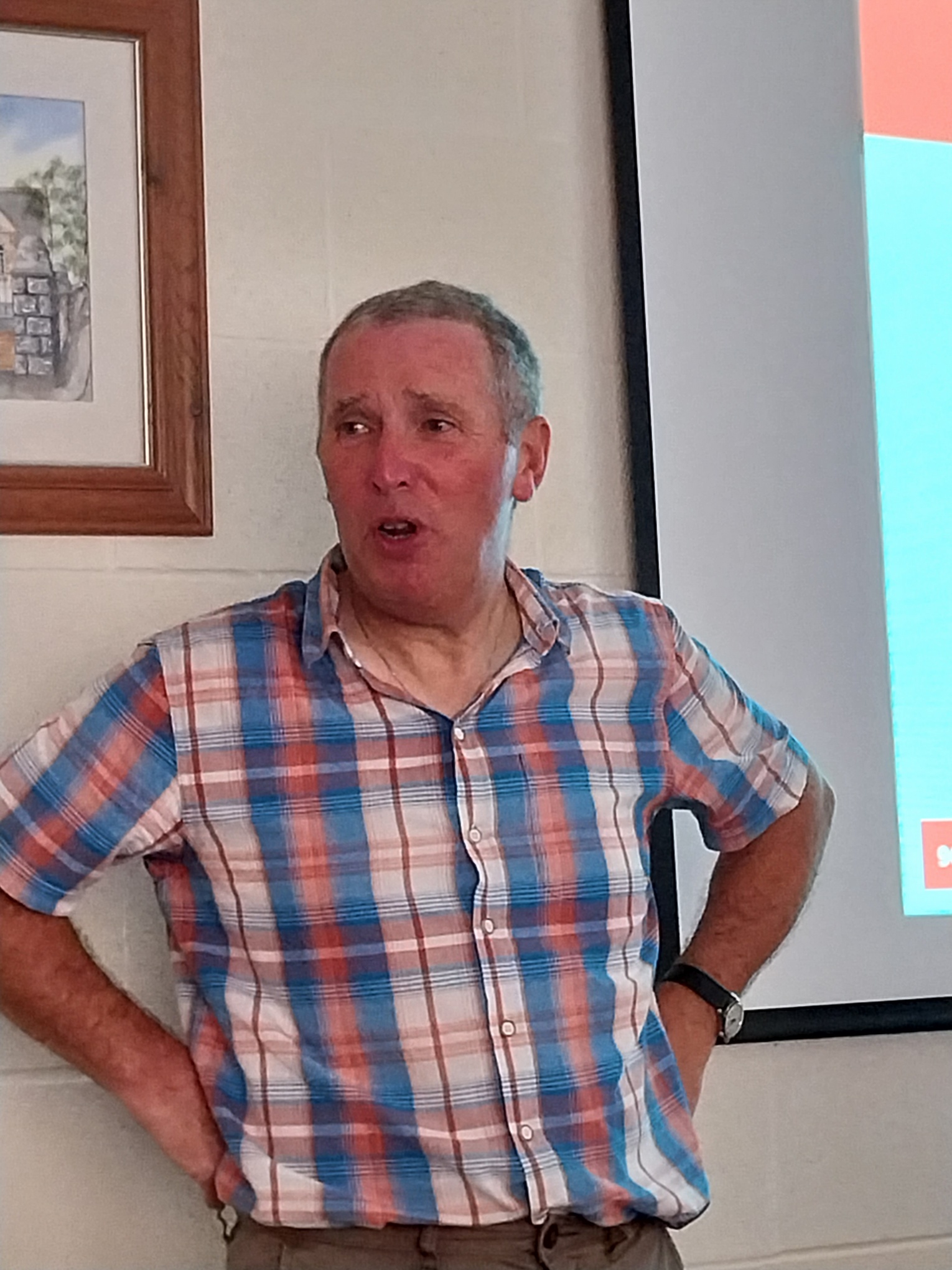
Our leader - Darryl
Resurrecting the branch
Following the meeting on 4th March, the new commitee is
Chair – Darryl Porrino
Vice Chair – Steve Binks
Secretary – John Storey
Treasurer – Sian Nevitt
Darryl can be contacted at
Steve can be contacted at
See "Branch Meetings" for a list of the meetings which have been organised to date.
From Steve and Nancy Binks
After 10 years, 5 months and 7 days, Nancy and I have finally completed our SomeKindHand Pilgrimage:
Newsletters
I have been rather under the weather for the last few months but hope to resume the newsletters in the next month or so. All contributions are welcome!
A centenary that is part of British and Irish history
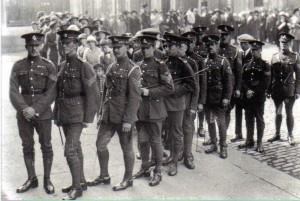
The 22nd August 2022 is the centenary of the death of Michael Collins in the Irish Civil War which was between the new Irish government forces , ie pro the Treaty with the British government, and the anti-Treaty forces. The Civil War ended in early 1923 with the death of Liam Lynch, leader of the anti-Treaty forces, at the age of 29. Collins was 32 when he died. The Welsh connection is that Collins had been interned after the 1916 Easter Rising at Frongoch near Bala, along with many others, 25% of whom had nothing to do with the Rising! There is a memorial plaque at Frongoch.
The photo is of British Army NCOs queuing in Dublin to see the lying in state of Michael Collins in August 1922. The British Army had a garrison of 5,000 men in Dublin until December 1922, ie a year after the setting up of the new state. The GOC was Sir Neville McCready, whose father had been an Irish actor who went to England to seek his fortune. The British Army had troops in the Irish Free State, as it then was, until 1938.
Steve and Nancy latest (30th July)
Steve and Nancy's latest installment of their pilgrimage to visit all the British and Commonwealth graves and memorials on the Western Front is here
Latest Newsletter (May 2022)
Our latest newsletter is available here.
Russia and Ukraine
If you think that we were not involved in this area, you need to look at the articles on this site - here and here, and indeed Robert Gerwarth's wondefully written book, reviewed here.
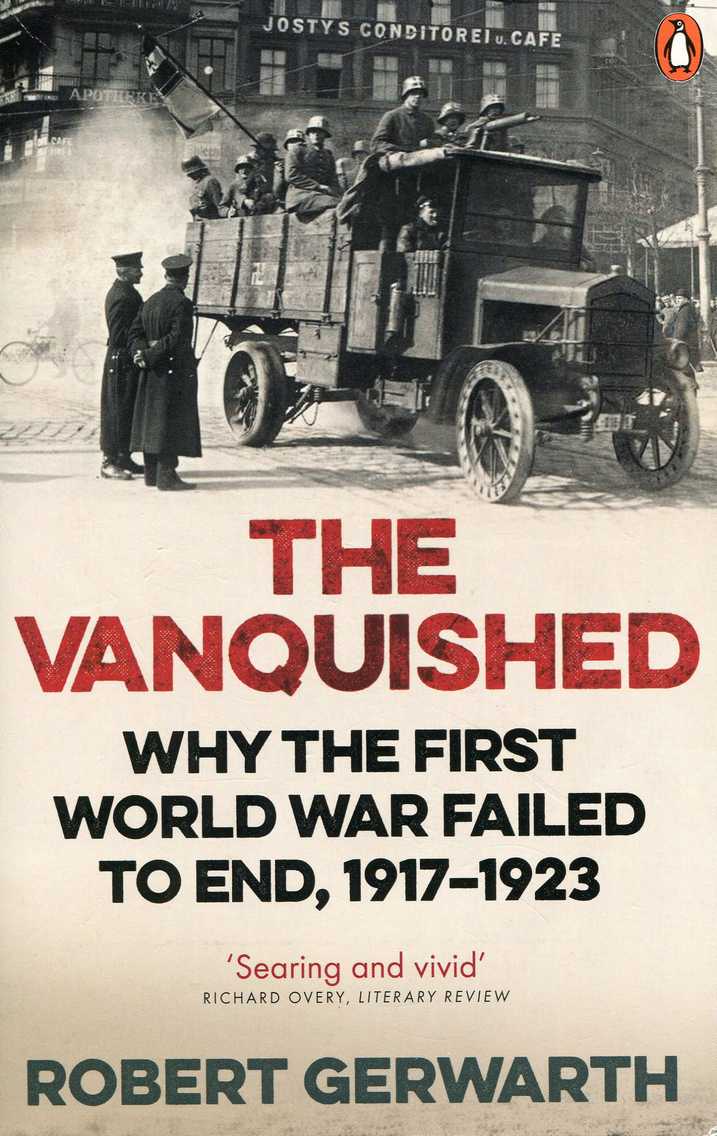
Stop Press!! New Dragon's Voice (February 2022)
The latest newsletter is now on this website, with articles on Amelia Earhart, the use of the media in WWI, and on Beaumaris churchyard - click here
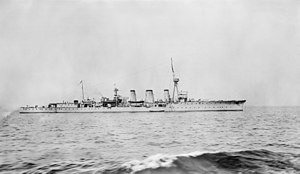
HMS Caroline in 1917 - the only major ship from the battle to still exist
Egyptian Expeditionary Force
There are a series of talks on various aspects of the EEF scheduled for the next few months. You will need to email Stuart at
New book reviews
There is a review of Ring of Steel by Alexander Watson, about Germany and Austro-Hungary in WWI - here, and one on the Austrian navy - here.
There are also two recent book reviews.
One of November 1918: the German Revolution by Robert Gerwarth - click here.
The second is of The Fortress: the Great Siege of Przemsyl by Alexander Watson - click here.
There are no face to face meetings for the foreseeable future. However, we are able to hold branch Zoom meetings.
New Book Reviews
We have a review of Eugene Rogan's book "The Fall of the Ottomans, the Great War in the Middle East 1914-1920" -here and one on Michael Freemantle's book "The Chemist's War 1914-1918" - here.
WWI graves "lost" in Caernarfon churchyard
See the report on BBC Wales - here
Book review record!!
The review of the John Buchan book "Greenmantle" has now passed 3000 hits. All the other reviews are in the 200 to 500 range. Why on earth has this review been so popular? It must be on a reading list for a course somewhere? The reason for the review being on a WWI website is that it contains one of the few, possibly only, accounts in English of the battle of Erzurum which was between the Ottoman Turks and the Russians. One commentator has written that the book was written as propaganda, as part of Buchan's work in WWI. However, it should also be said that it is racist and anti-semitic, which makes the 3000 hits all the more amazing!
Bangor railwaymen plaque
The plaque listing the 16 men of the Bangor Railway Institute Boys Corps who died in WWI has been moved from St David's church (closed for several years) and has been reinstalled in Bangor railway station. See the article on the memorial - here
Steve and Nancy's latest update
The latest update on their Pilgrimage to visit all Briitsh and Commonwealth grave and memorials on the Western Front is here.
Tillis Haley - now over 6,000 hits!
The most popular article by far on this site is the account of local hero Tillis Haley, where the number of hits is 20 times anybody else's! I presume his fame may be due to his having been a teacher in Caernarfon, and just maybe there is a school history project involving him? His story is here.
Book reviews
We have four new book reviews -
Mark Jones: Founding Weimar; Violence and the Founding of the German Revolution 1918-1919, on the chaos in Germany in the immediate aftermath of WWI
Eugene Rogan: The Arabs; a History, which covers WWI and the post WWI period in the Middle East
Peter Hart: Fire and Movement, on the first four months of WWI;
Vejas Liulevecius: War, Land, on the eastern front, on the German occupation in the East;
Sholto Douglas: Years of Combat, on his reminiscences of WWI in the RFC.
They can be read - here
Bangor Railwaymen
There is a new article on the memorial to Bangor railwaymen, and names which are on it - here
So, let’s test your knowledge of this period, post 11th November 1918, which was most certainly not the end fighting, commotion, carnage and destruction. Can you answer the following questions?
- 3 VCs were awarded for an action 18 August 1919
- Which armed service?
- Where?
- Who on earth was the enemy in 1919?
- Was the Versailles Treaty the only one to emerge from the Paris conference?
- Which country lost most land and people in the Paris treaties, and it isn’t Germany?
- Which enemy capital was occupied for 4 years? It wasn’t Berlin.
The answers:
1. (a) Royal Navy, for an attack using coastal motor boats.
(b) Kronstadt – and it’s not anywhere remotely near Germany, it’s the port guarding St Petersburg.
(c) the Russians, or perhaps Bolshevism – so how do you fight a philosophy?
2. No: there was Versailles, Neuilly, St Germain, Trianon, Sevres, San Remo plus lots of follow-on ones.
3. Hungary, including the loss of 4 million ethnic Hungarians to other countries.
4. Constantinople (Istanbul). You may have forgotten this, but the Turks have not.
These are only some of the bizarre events following on from WWI.
CWGC restoring African memorials
The CWGC is restoring the memorials to the many thousands of black African soldiers who died in WWI, many of whose deaths were not even recorded. The memorials are in Nairobi, Mombasa, Dar es Salaam and Abuja (Kenya, Tanzania and Nigeria). There is also a memorial at Mbala in Zambia to mark the surrender of German forces (who also used black African soldiers) on 23rd November 1918.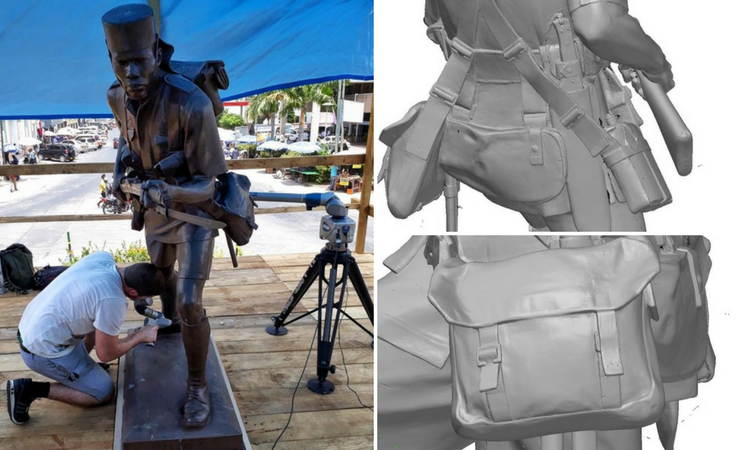
Loss of HMY Iolaire 1st January 1919
The CWGC have marked the centenary of another forgotten catastrophe at sea - the sinking of HMY (HM Yacht) Iolaire off the Isle of Lewis when she was bringing home returning servicemen. It is believed that some 200 died, of the 283 on board. They are buried all over the Western Isles, and those not recovered are commemorated on memorials - see here.
The centenary of the loss of the RMS Leinster
The story of the RMS Leinster and its centenary commemoration are on this site - here
Old Colwyn war memorial
Steve and Diege are in the "Daily Post" for their work on this memorial - Daily Post article.
Hirano Maru
A recent post from the group commemorating the sinking of the RMS Leinster has mentioned the sinking of the Hirano Maru on 4th October 1918. She was a Japanese owned ocean liner that was in a convoy from Liverpool to North America when she was sunk by a U-boat UB-91 south of Ireland with the loss of 292 lives. There were 28 survivors. There are 8 bodies buried in the graveyard of Dale Parish Church in SW Pembrokeshire, which were washed ashore between 4th and 29th November 1918. As the bodies were unidenitifable, the CWGC declined to maintain the grave, and the memorial cross was erected by the people of Dale. Other bodies are buried at Angle and Freshwater West.
A memorial is to be erected at Angle in time for the 4th October, financed by the local community and the shipping line Nippon Yusen Kaisha, the original owners of the Hirano Maru, who were delighted to learn of the locals' interest in the whole story. This information has come from the Dale Coastlands History Society and the West Wales Maritime Heritage Society.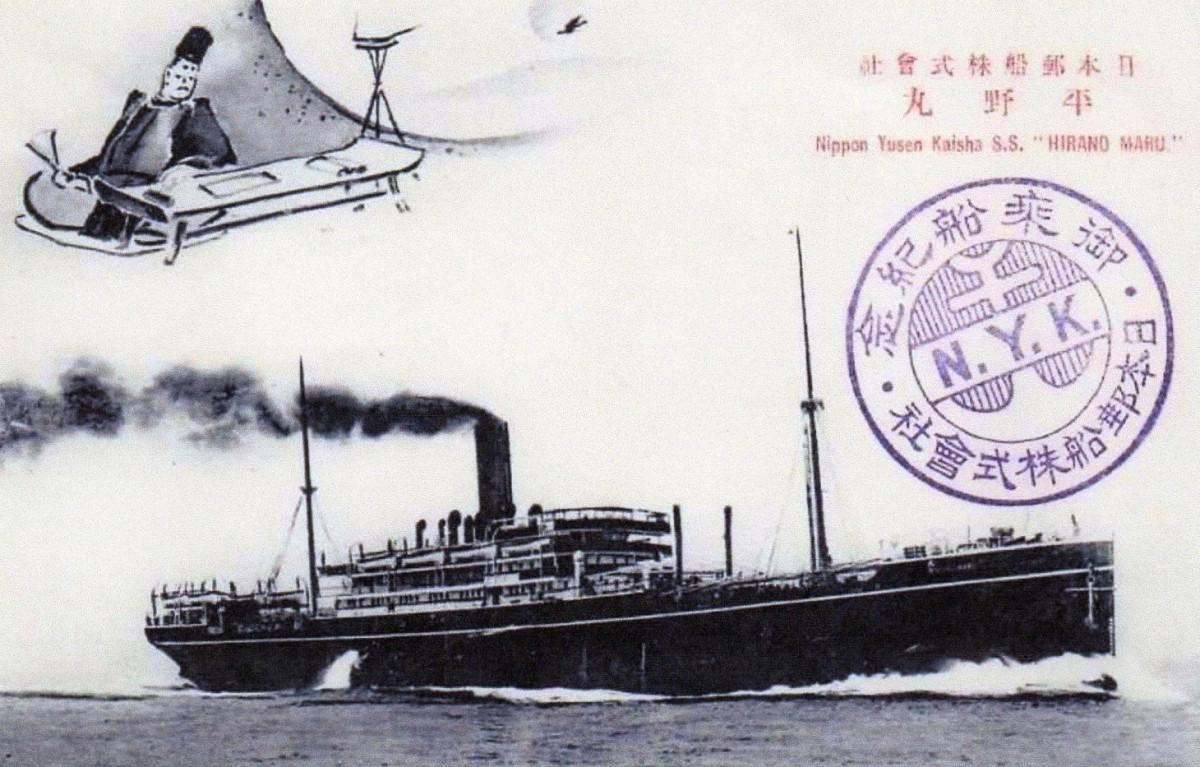
Why was there a WWI?
The talk given to North Wales WFA on this theme has now been turned into an article and put on to this website - here
Article on local history
We have a new article by Jerry Rendell on his great uncle, Lawrence Oakley, who was the silhouette artist of Llandudno pier - here.
New Book Reviews
There are two new book reviews on this site. The first is on Mike O'Brien's book "Twilight of the Special Relationship", about Americans in the British forces in WWI, which is here. The second review is on Norman Stone's book "The Eastern Front, 1914-1917" which is still arguably the best work on the Eastern Front, and that review is here.
Medals of Private George William Shaw
We were contacted recently through the website by Mark Shaw who is searching for information about his great uncle, Private George William Shaw, 12364 of 9th battalion Cheshire Regiment. Mark's email reads as follows:
Hi
I hope you may be able to help me, as I am currently researching my Family Tree. I have identified George William Shaw as my Great Uncle. He served in A Company 9th Battalion Cheshire Regiment, from 01/09/1914 until his death 22/06/1917. His service number was 12364.
I have found that his medals (with the exception of his BWM), death plaque and associated certificates were sold on Ebay in 2014. I am unable to identify the seller or the purchaser.
I would like to find who it was that bought the items, if only to ask for copies of the documentation and, maybe provide a little background information in regard of my Uncle. Ideally, I would love to buy the items.
I know it is a long shot but I thought that it may be possible that one of your members may be the purchaser. I would be obliged if you could see your way clear to circulating the details to your membership.
Mark Shaw
If anyone does perchance know anything about Private Shaw could you please contact Mark at
Battle of Cambrai centenary
There is an article on the BBC website about the use of tanks at the Battle of Cambrai - see the link here.
"Bloody April" film being made
From Leslie Lord: ASA Productions Ltd are currently making two one-hour documentaries for "Yesterday" channel based on the book "Bloody April" by Peter Hart. On their website there is a trailer for a film on building a Bristol Scout aircraft - Scout trailer.
Book reviews
We now have a specific book reviews section on the website - see Book Review Section.
Tribute to Hedd Wynn
There is a video on the BBC website which is a tribute to Hedd Wynn. It is in English and includes footage of around his home farm in North Wales - Hedd Wynn video
Hedd Wynn's house now open
Hedd Wynn's house has now had the interior restored and the new museum there is open - see Yr Ysgwrn
Easter Rising and WWI
We now have a write-up of the talk given to the branch, and elsewhere, by Trevor and Denis - see here.
Welsh women in WWI
I have just come across a website on Welsh women in WWI - click here
Local memorials and graves
We have some new articles on WWI soldiers from North Wales who are buried or commemorated locally - see Welsh memorials and graves
Book on local soldiers in the Conwy valley
Retired doctor Bridget Osborne has, with others, written a book on the local men from the villages of Eglwysbach and Llansanffraid (Glan Conwy) who served in WWI. Bridget has managed to trace family details of many of the men as well as the circumstances of their death in the case of fatalities. The book was funded by the Heritage Lottery Fund and copies have been distributed to homes in those two villages.
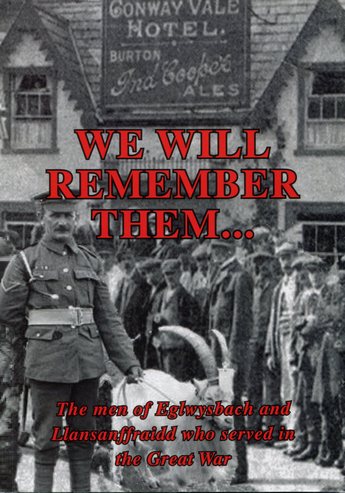
The Lost Tommies of Vignacourt
A collection of photos of Tommies billeted in the village of Vignacourt has recently come to light and is on the BBC One Show website - One Show site Can you identify any of them?
Welsh WWI casualties
There is an article on the BBC website on a book recording all Welsh WWI casualties and which will be on display at Bodelwyddan castle - see BBC website article
Nurses killed in WWI.
The "Nursing Times" reports on a project to gather information on those nurses who were killed in WWI. See "Nursing Times" article
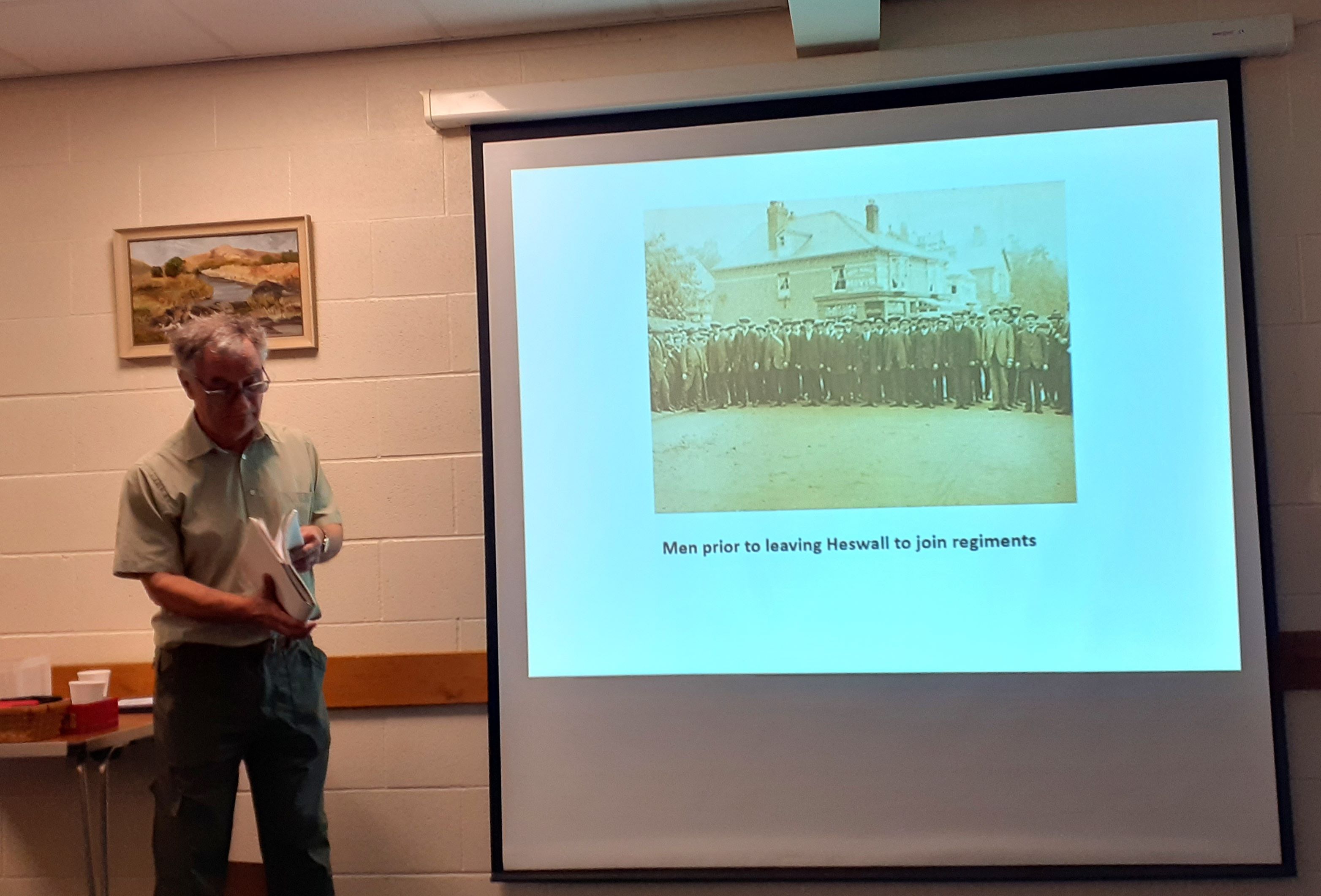
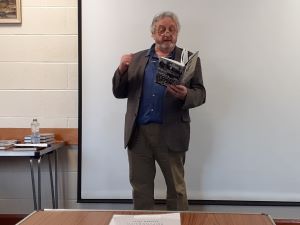
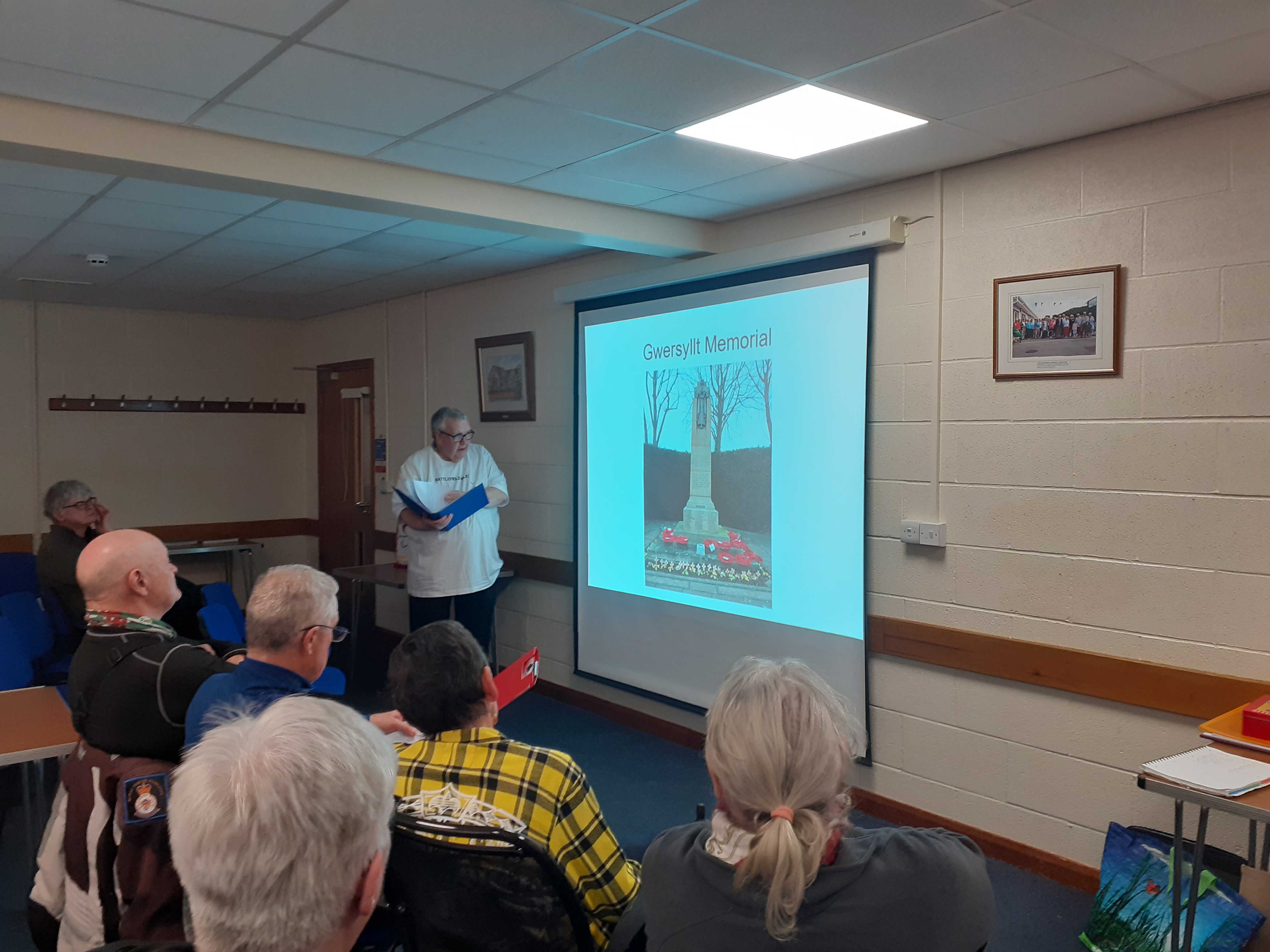 4. Presentation
4. Presentation